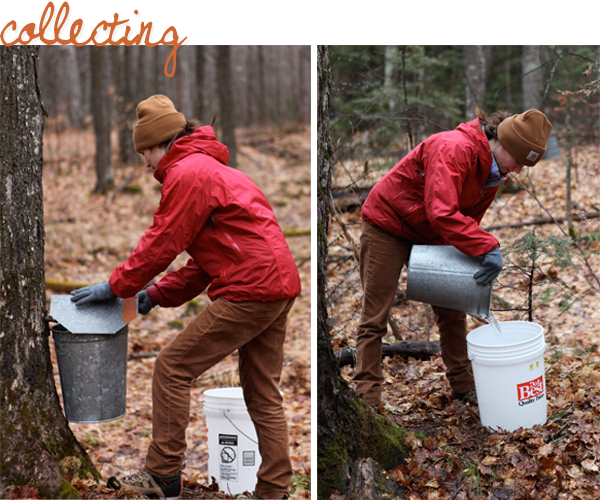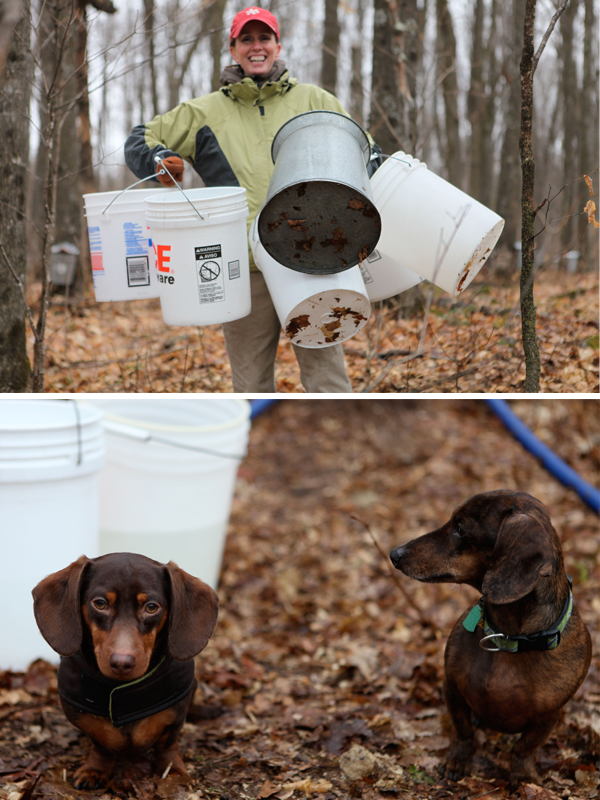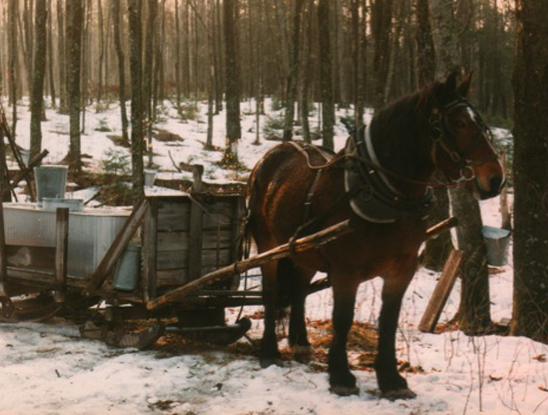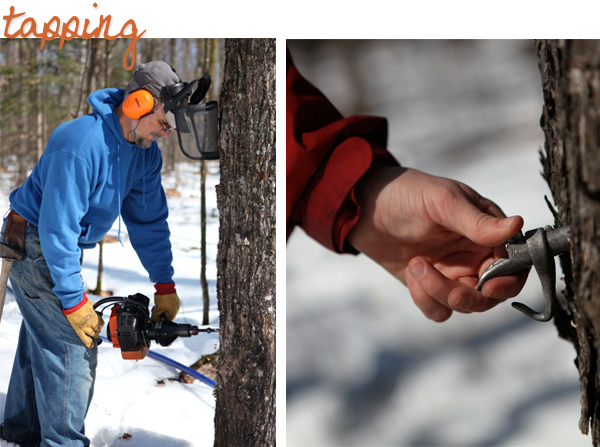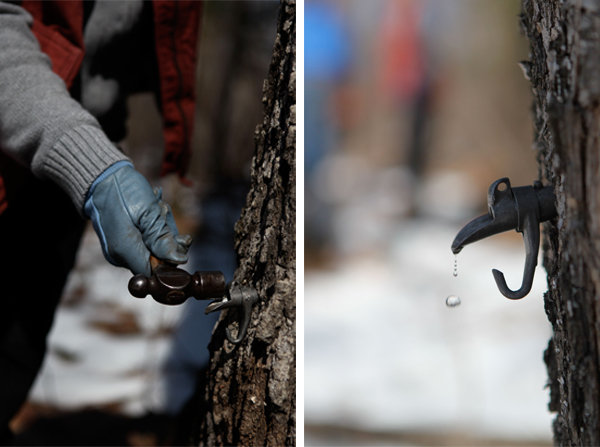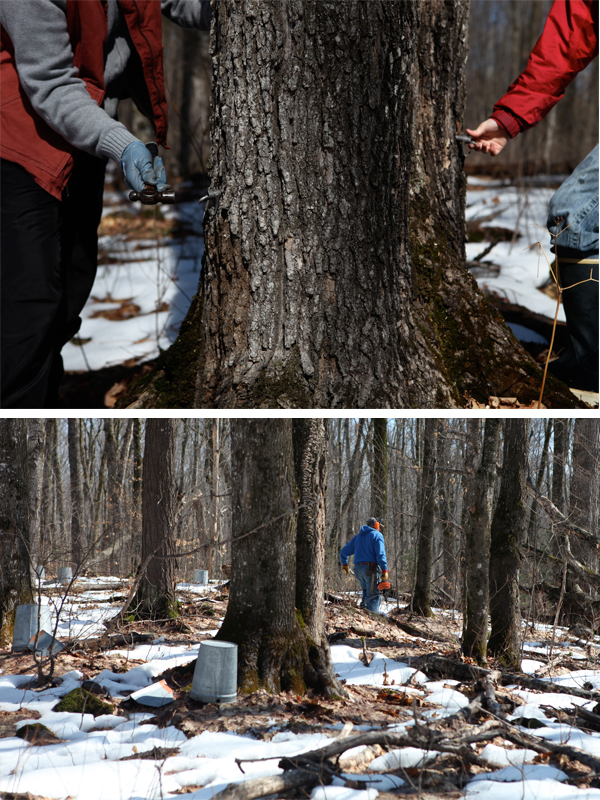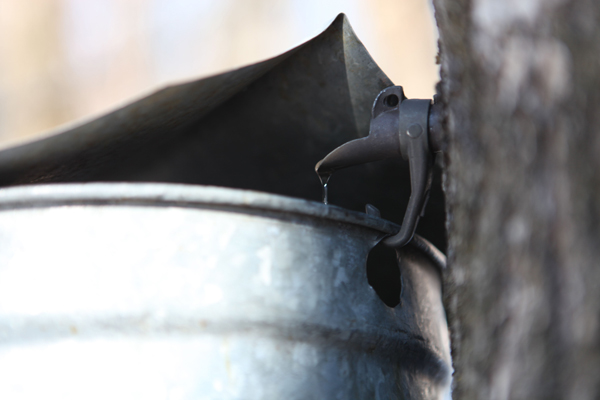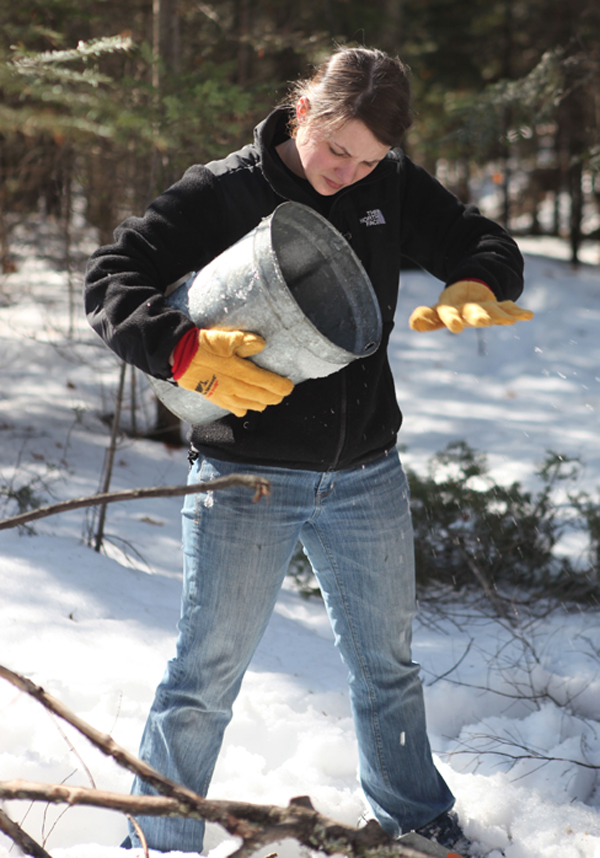I’m sorry for the lull in posts lately. Mr. Itty Bitty and I have been busy helping my family make maple syrup for the past few weekends.
My family has been making syrup for 23 years now, and it is a wonderful activity that brings us together every spring {nothing bonds people like the outdoors, honest hard work, and a sweet treat to reward you in the end.} I am excited to share the process with you and hope that maybe you’ll give it a try with your family. You will hear more about all that soon…but first, let’s get on with a new Itty Bits post.
Our last Itty Bits Challenge was to NEVER FORGET TO BRING YOUR REUSABLE SHOPPING BAGS WITH YOU WHEN YOU GO TO THE STORE!! I used all caps so that hopefully you can feel my frustration a little. Because, the sad fact is, this is the hardest bad habit for me to break. Why?!? It seems like such a simple thing to do! But somehow I am so used to just using the paper/plastic bags at the grocery store, and it is really, really hard for me to remember to bring in my reusable bags. This is my major eco-sin, and I am confessing it to you all in hopes that embarrassing myself is what it takes for me to finally change my ways.
Alright! That felt good! Moving on!
Recently, the Mr. and I went out for beer and wings at a local restaurant {yep, we occasionally indulge in the fantasy that we’re still in college}. It was a delicious, cheap, and satisfying dinner. Until we noticed something that grossed both of us out beyond the point of return: the chicken wings were SO tender. They were SO tiny. They SO did not come from any real-life chicken I have ever seen before.
Now, we’re no strangers to the fact that most of the meat served at restaurants come from huge farms/huge factories where the meat is chocked-full of hormones and other wonderful things, and the treatment of animals is complete and utter horse-crap. It is for this reason that we avoid chain restaurants and usually eat at places that serve meat from local farms. We kind of pride ourselves in our level of “awareness” on the topic of meat…which is why it was a shock when we realized what we had just eaten, without even thinking twice about it. How many other awful things are we consuming without a worry in the world? Shiver.
So, without further ado, this week’s challenge is to eat better meat. And if you can’t find good meat {no hormones, grass fed/vegetarian fed, family farm, local, organic, free-range} then eat NO meat.
This is no simple task, especially for Wisconsin-born-and-bred-brat-loving kids like us. The Duluth Farmer’s Market is not open for the season yet, and although our grocery store does a fantastic job offering locally grown produce and all kinds of organic goodies, they are slacking in the meat department– they don’t stock anything but Gold n’ Plump {don’t be fooled by the packaging that claims their chickens come from family farms!} So, I wrote the grocery store the following letter:
Hi Super One,
I am a loyal customer and never shop anywhere else for groceries. Thank you for doing a great job to stock organic and locally grown produce. It’s really important to me to support family farms. Your prices on these types of foods are excellent- far cheaper than Whole Foods for the same brands.
I just have one bone to pick…You only carry one brand of chicken: Gold n’ Plump. I have a problem with this because of how Gold n’ Plump treats the chickens that come to them. Yes, they might come from family farms in MN, but once they arrive at Gold n’ Plump they are treated terribly. I am really bummed that I don’t have any other choice but to buy this brand. I would really appreciate it if you could stock another option in addition to Gold n’ Plump. There are several excellent local farms that can provide FDA approved meat, all grass-fed and free-range:
Earthwize Natural Meats is a coalition of small-scale family farmers committed to sustainable, environmentally responsible farming and to providing healthy, natural foods for their customers. Beef is available year round in variety packs of 25 to 50 pounds. Pork is seasonal and is sold in variety packs of 30 to 40 pounds. Chicken is seasonal (spring through fall) and is available as whole chickens, which average 5 pounds and are packaged six to a box. All meat is frozen and processed at plants meeting USDA standards.
Earthwize Natural Meats – Mark Thell, 2100 CR 4, Carlton MN 55718 – (218) 384-9350.
E-mail: thell@computerpro.com
Website: http://soarizona.net/greatbeef/earthwize.html
Green Pastures Dairy, owned and operated by the Hedquist Family, offers Minnesota Farmstead™ 100% grass-fed, all natural, raw milk cheese. Spring through fall we milk our totally grass-fed cows and use this highly nutritious milk to make our hand-crafted cheeses. May through September, 100% grass-fed ground beef, and pasture and whey-fed pork. No herbicides, pesticides, or chemical fertilizers are ever used on any of our pastures, and no hormones or antibiotics are used in our herd.
Green Pastures Dairy – The Hedquist Family, 2353 Bromfield Road, Carlton MN 55718 – (218) 384-4513.
E-mail: cheese@greenpasturesdairy.com.
Website: http://www.greenpasturesdairy.com.
Please let me know if buying from these farmers is a possibility. Thank you so much!
-Tonia
…If you’re in the same boat, please write a similar letter to your local grocery store. Stores should respond to the needs of their customers, so if enough of us do this, we might make an impact!

Now for some green inspiration from around the internets:
A good friend contemplates minimalism {and mentions Itty Bitty! Thanks Cheri!}
My cousin-in-law bikes across America in search of sustainable communities.
You never had me fooled, Wal-Mart.
Get green, be well.
Partake in a crunchy giveaway.
Have a bunny-friendly Easter.
Is there a Trash-to-Treasure contest going on in your town for Earth Day? More info here and here.
